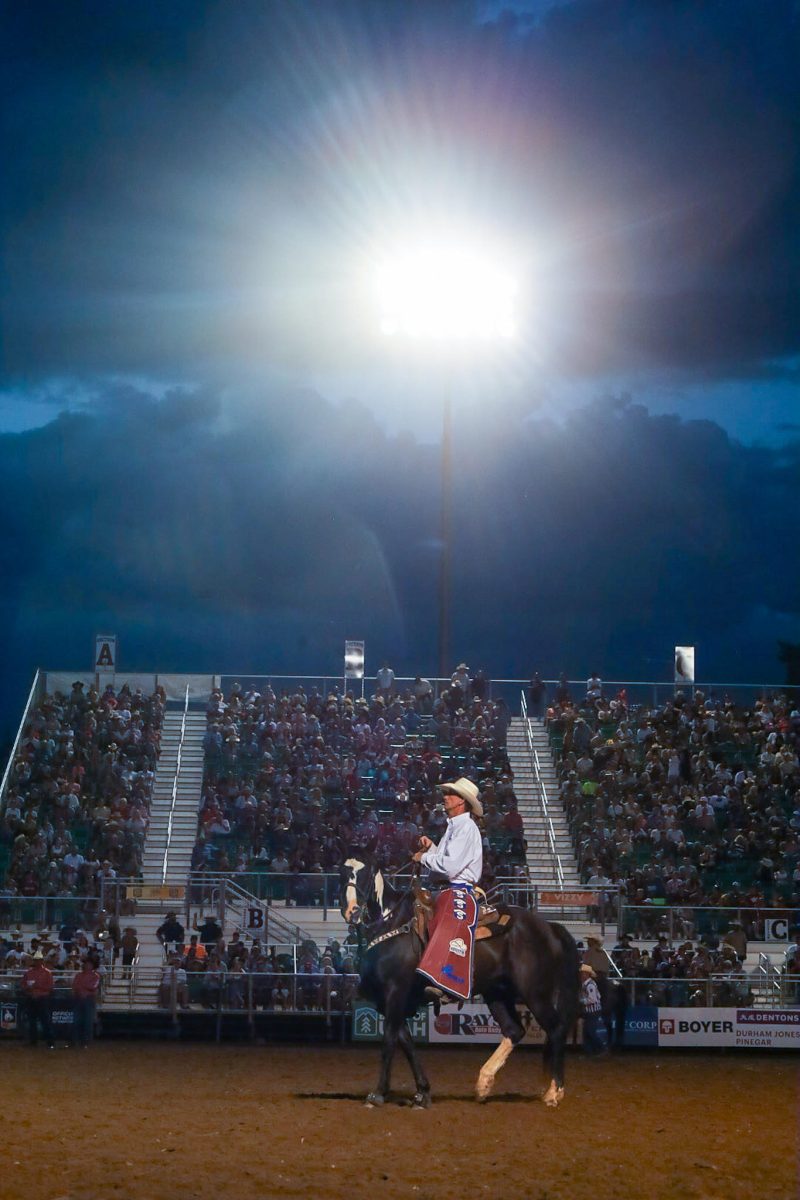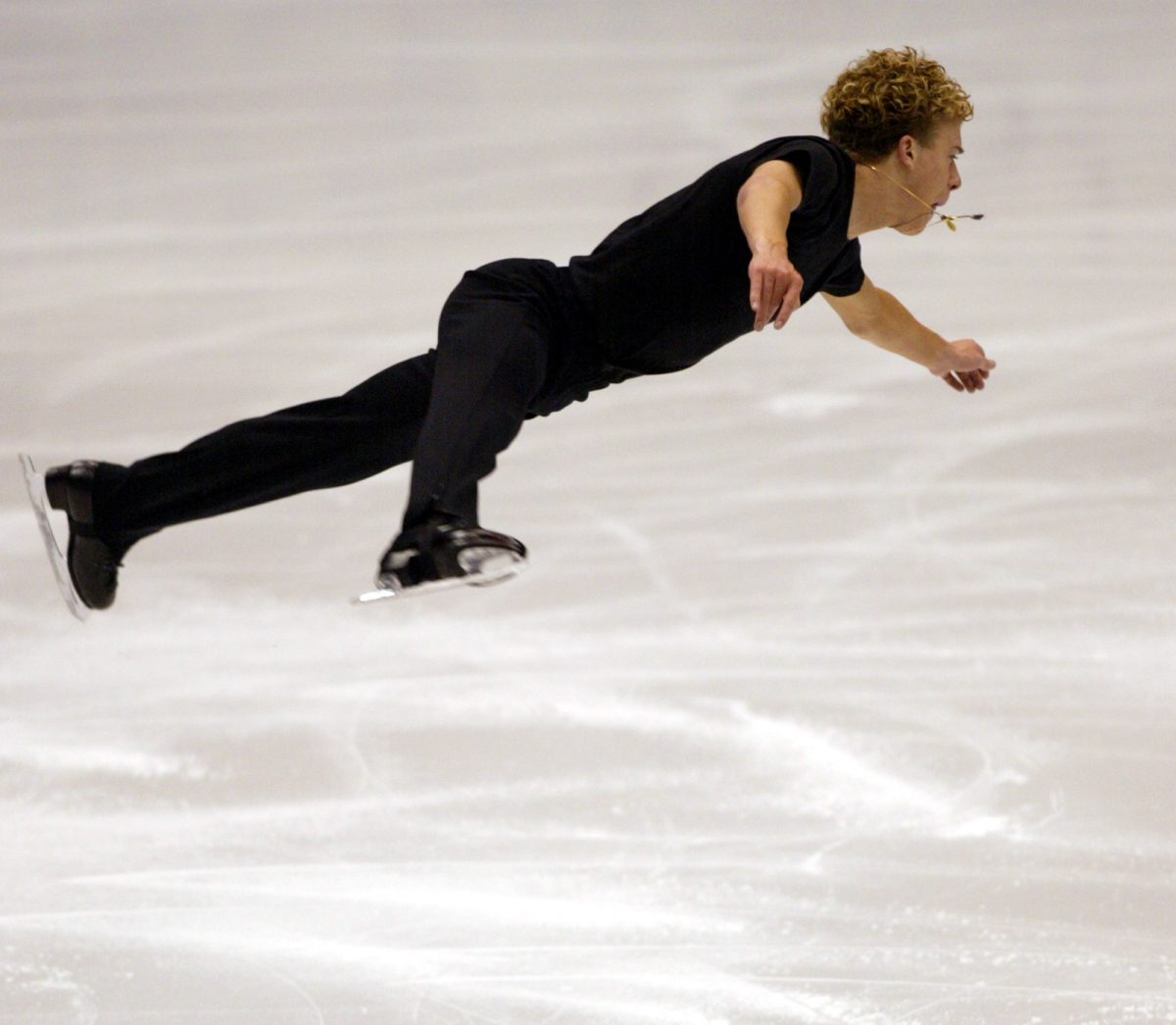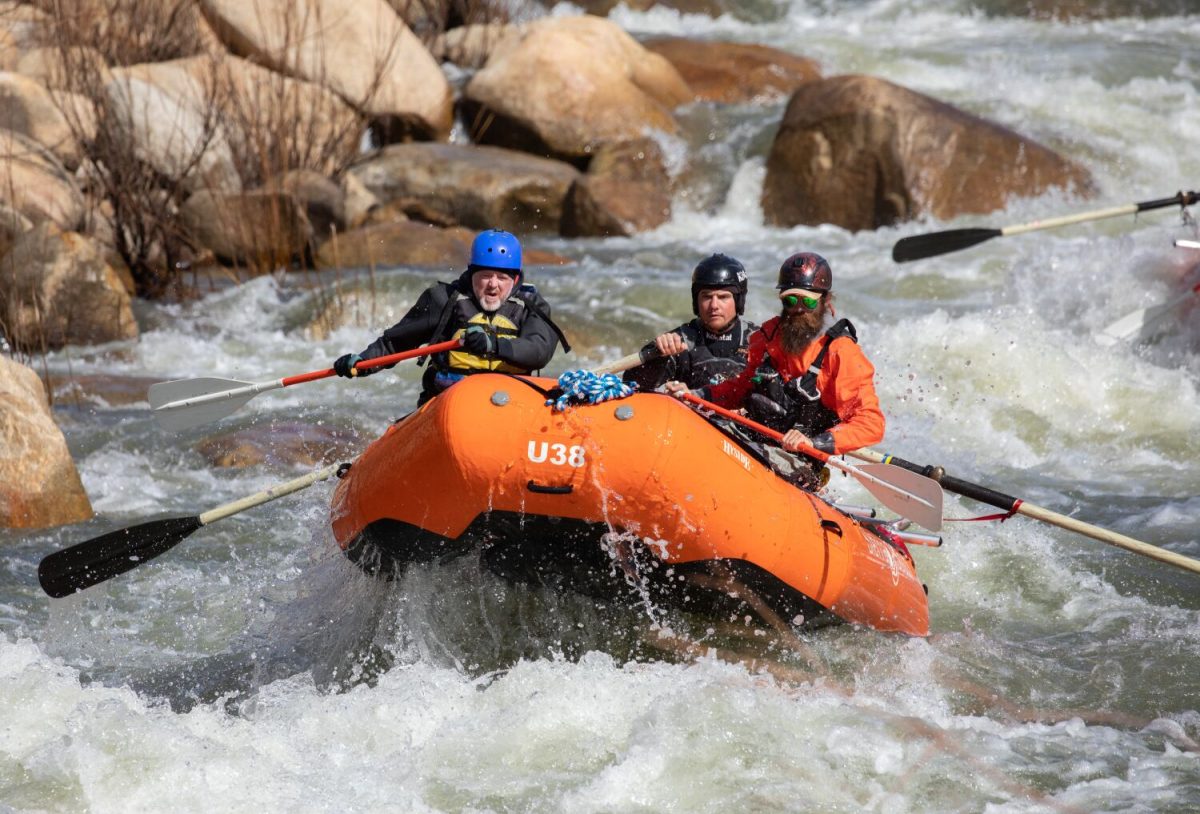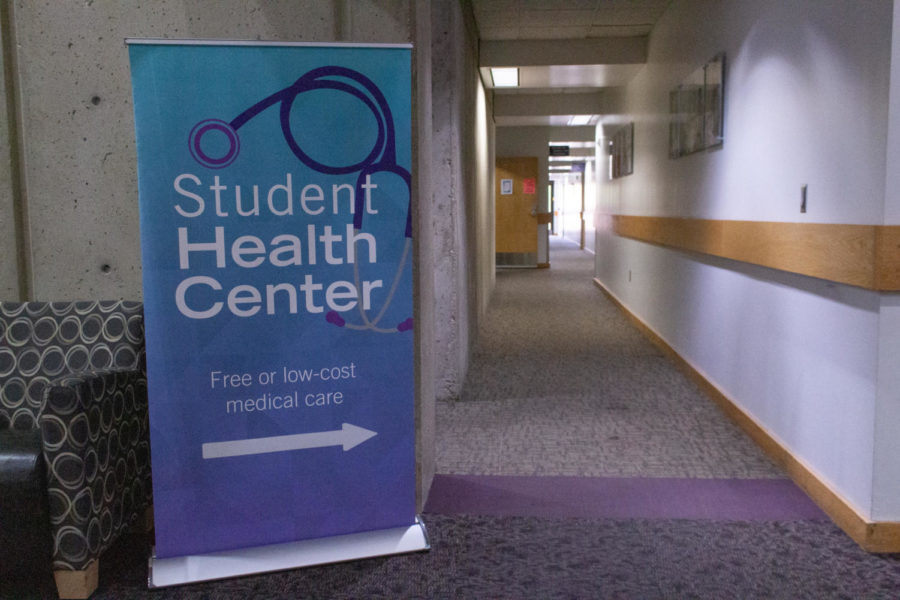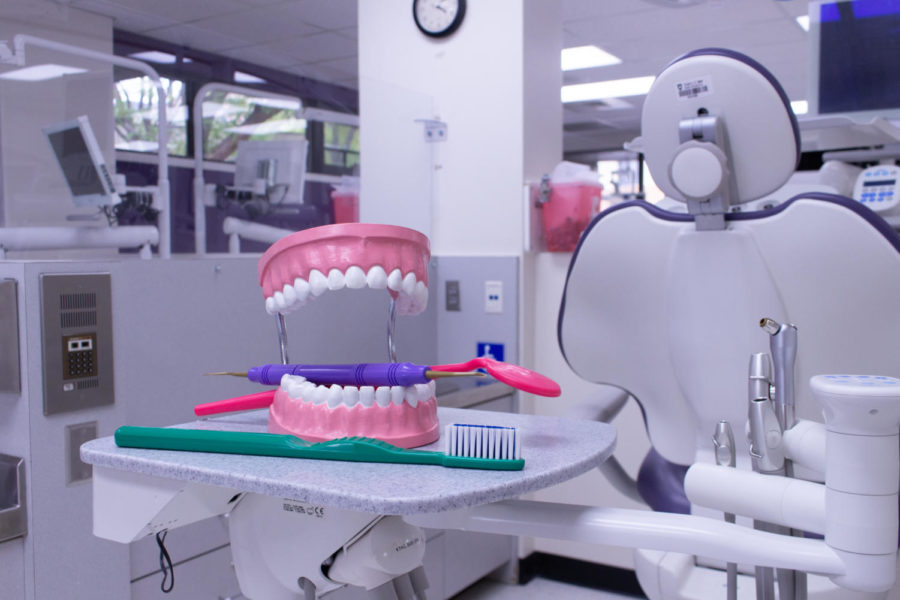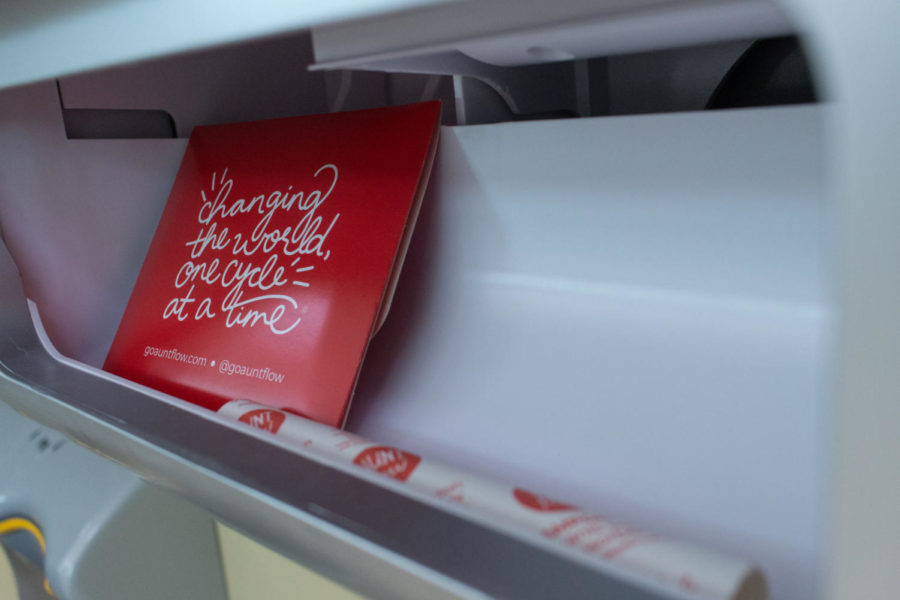The theater department at Weber State University recently read a play by Rachel Bublitz, a professional playwright, called “Red Days.” The play follows the daily challenges a young athlete faces while trying to train on the track team, set in the future where red days, in which the air quality is deemed to be unhealthy, have become far more frequent.
Bublitz was inspired to write this play after moving to Utah from the Bay Area. Bublitz saw how many young kids and athletes struggled with asthma and how little the athletic departments do to protect them.
“Our coaches do have the team practice outside on high pollution days,” Noah Larkin, a Westminster soccer player, said. “There are no current protocols in place that are followed in order to protect athletes on high pollution days. Out of roughly 28 teammates, I would estimate that at least 12 have asthma or breathing deficiencies.”
Bublitz’s daughter was one of many young athletes who moved to Utah with healthy lungs and no breathing issues, who soon developed asthma and a daily need for an inhaler.
“So many more kids have inhalers here than they do in California,” Bublitz said. “Coaches message the parents about air quality, but they would still have their athletes practice outside. Currently, coaches will only bring athletes inside on snow days.”
Even athletes are now becoming concerned.
“Other weather concerns like lightning and snow are always monitored and training is adjusted for those conditions, but nothing for bad air quality,” Larkin said. “I understand it is frustrating for coaches and staff to make changes due to inclement weather, but the health of athletes on the team should come first.”
Bublitz hopes her play will bring awareness to the consequences athletes have to face due to high-intensity training outside when air pollution is high.
It is estimated that 30% of high school and college athletes suffer from asthma in Utah. Utah has a higher adult asthma prevalence rate of 10.8% compared to the national average of 9.3%.
According to Shauna Abbenhaus, a department air monitoring scientist with the Utah Department of Environmental Quality, the Wasatch Front has seen an increase in red days over the last five years.
“Inversions are determined by the meteorological conditions,” Abbenhaus said.
This happens when warmer air at a higher altitude traps colder air below it. Inversions produce smog and trap pollutants produced by vehicles, fires and industry. This is why winter has a higher number of red days than spring and fall.
However, inversion or no inversion, the sun causes pollutants in the air to convert into dangerous gasses. This reduces the air quality around us, which means summer is also a popular season for red days. For athletes who train vigorously in the winter and summer months, it can be detrimental to their health and athletic goals.
“One of the biggest contributors to the pollution in the air is small engines: lawn mowers, leaf blowers and heating pumps,” Eric Michaels, an environmental health supervisor for the Salt Lake City air quality department, said. “The state has identified those as an area we can really hone in on. If we can reduce those, we can reduce the pollution quite a bit.”
The Division of Air Quality passed the Beehive Emission Reduction Plan in 2022 in order for greenhouse gas planning initiatives and implementation.
“This plan is an incentive plan to switch all small engines to electric engines,” Michaels said.
Although there are actions in place to reduce the pollution in the air, it is not something that will happen overnight. Every day, athletes must face the consequences of training and competing in dire breathing conditions.
Soccer, lacrosse, track and field, cross country, football and baseball are all sports that practice and train outside daily in the peak seasons of red days.
“Training outside on high pollution days could have acute impacts such as loss of breath or exacerbation of respiratory inflammatory response,” Kianan Whitestone, a former soccer player at East Carolina University and current physician assistant, said. “This could lead to future chronic respiratory issues if exposed for years at a time in high pollution areas.”
Carrie Ferdin, a cross country coach at Layton High School, sympathized with her athletes, explaining it has been hard for some of the top athletes to train at the level they would like to. The coaches must adapt workouts, cut them short or take them inside when the air quality is bad.
“Layton High offers no guidelines for high pollution days. I have had to do all my own research to try and figure out what is best to do for my athletes,” Ferdin said. “As a coach of endurance athletes, I feel like they are particularly vulnerable to pollution. Layton High doesn’t advocate at all for these athletes. I look for treadmills that they can use indoors when the air quality is bad.”
The Student-Athlete Well-being section of the 2023-2024 NCAA Division Manual states, “Each member institution shall facilitate an environment that reinforces physical and mental health within athletics by ensuring access to appropriate resources and open engagement with respect to physical and mental health.”
It has become clear that the Athletic Departments of Utah high schools and colleges do not have any policies or regulations established regarding the well-being of their athletes who suffer from asthma on red days.
“The organization as a whole does not have any protocols set in place for high pollution days,” Elizabeth Katoa, a track and field coach at Layton High School, said. “However, as coaches, we will send athletes with severe asthma to bike inside. We encourage the use of their inhalers and ask them to communicate how they are feeling. We make sure to watch them closely as they workout and modify as needed.”
Ferdin and Katoa have both reported that more and more of their athletes develop asthma each year. Along with the rise of asthma, the number of red days appear to be rising as well.
Athletes who struggle with asthma are expected to keep up with the rest of the team, even when air conditions are bad. Ferdin and Katoa both make a personal effort to advocate for their athletes, but the health and well-being of the athletes during red days is something that is often overlooked.
Athletes along the Wasatch Front who dream of achieving athletic accomplishments while facing the challenges of training in poor air conditions have grown used to the reality they are faced with.
“I have asthma and I’m okay as long as I have my inhaler. I’ve never known anything else,” Branson Wood, a lacrosse player at Utah Valley University, said. “We have access to indoor facilities. I would love for our team to intentionally move indoors on high pollution days. I think coaching needs to become more mindful of everyday health, as well as full season health.”
Haley Mertz, a local travel nurse, said that athletes who must train and perform at competitive levels throughout the season can face detrimental consequences to their health.
“Poor air quality can decrease lung function so people with asthma, or COPD, emphysema and more could have exacerbations,” Mertz said. “Therefore, it would affect training and the athlete’s performance. They will not be able to perform at the level they otherwise would be able to without the poor air quality, and it can cause long-term damage.”
Wood would like to see more health care and medically trained coaches in sports in the future.
“I feel like training on high pollution days is not thought about and I would like more consideration to be taken,” Wood said.
Elementary schools in Salt Lake County do not allow their students to attend recess outside on red days. They are also meant to keep students with asthma inside during recess on orange days.
The parents, coaches and athletes would like to see similar policies in place in the athletic departments of Utah high schools and colleges.
The impacts of Utah’s air pollution on student athletes
April 16, 2024
A graph showing the increase in air pollution in recent years. Data source: Shauna Abbenhaus, department air monitoring scientist with Utah Department of Environmental Quality.
- Air Pollution
- Asthma
- Athletes
- Athletic Departments
- Baseball
- Beehive Emission Reduction Plan
- Branson Wood
- Carrie Ferdin
- COPD
- Cross Country
- Elizabeth Katoa
- Emphysema
- Eric Michaels
- field
- Football
- inversion
- Kianan Whitestone
- Lacrosse
- Layton High School
- Lungs
- NCAA
- Noah Larkin
- Outside
- Rachel Bublitz
- Red Days
- Salt Lake City
- Shauna Abbenhaus
- soccer
- Sports
- The Division of Air Quality
- Track
- training
- utah
- Utah Valley University
- Wasatch Front
- Weber
- Weber State
- Weber State University
- Westminister
- WSU
About the Contributor

Star Neil, Graphics editor





